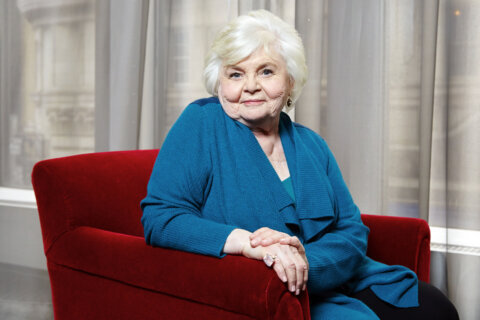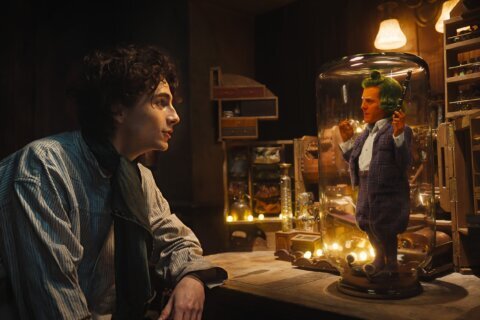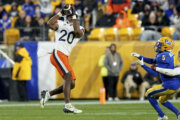WASHINGTON – It’s been seven years since a “cut to black” triggered a collective panic attack, sending couch potatoes to Dr. Melfi’s therapist couch to cope with the final seconds of HBO’s “The Sopranos” (1999-2007).
While “Dallas” revealed who shot J.R. and “The Simpsons” explained who shot Mr. Burns, “The Sopranos” offered no such closure. As a result, the debate over Tony Soprano’s fate lives on even after the death of James Gandolfini.
Over the past week, television’s most famous debate returned with new fuel on the fire. In a recent
interview with the website Vox, “Sopranos” creator David Chase was asked point-blank whether his gangster protagonist is truly dead. “No, he isn’t,” he reportedly replied.
Chase’s reps immediately claimed his words were taken out of context: “There is a much larger context for that statement and as such, it is not true. As David Chase has said numerous times on the record, ‘Whether Tony Soprano is alive or dead is not the point.’ To continue to search for this answer is fruitless. The final scene … raises a spiritual question that has no right or wrong answer.”
The back and forth speculation sparked buzz on both sides, one side cheering that Tony was still alive, the other side insisting Chase was being cryptic and that Tony was most certainly dead.
I’ve long sided with the latter, arguing that there are too many cinematic clues pointing to Tony’s death. But a few months back, after rewatching the entire series from start to finish, I posed a new theory to my students over at American University:
Tony Soprano is neither dear nor alive.
He’s dreaming of his death.
Better yet, we’re all dreaming.
That’s right, David Chase has commented on the nature of our very existence in a masterful double switch between three possible outcomes:
Theory #1: Tony survives with his family
The most passive, superficial reading might lead one to believe Tony simply has a family meal.
After all, we never see him physically shot.
We don’t hear gunfire off screen.
We never even see a gun.
This is sadly how most viewers read film and TV content, but Chase urges us to look deeper.
Tony’s mundane family meal would ring thematically true to the series — that family is most important — but this outcome is way too easy for someone of Chase’s genius.
Theory #2: Tony sleeps with the fishes
This outcome is widely believed because Chase goes to such lengths to portray it:
1) At the start of the final season, Tony chats with his brother-in-law, Bobby, in a Fredo-style boat scene. They discuss what it’s like to be whacked: “You probably don’t even hear it when it happens.”
2) Tony is shot and enters a coma in the final season premiere, titled “Members Only,” foreshadowing Tony’s eventual killer, who’s listed in the credits as “Man in the Members Only Jacket.”
3) While in the coma, Tony effectively enters purgatory by visiting the heavenly Inn at the Oaks estate. Here, Tony’s dead mother waits in the doorway in silhouette; Steve Buscemi tries to take his briefcase (a.k.a. his soul), and Meadow’s voice calls out from the woods, “Don’t go, daddy!” You’ll notice that this estate resembles the painting on the rear wall of the restaurant during the finale.
4) Everyone remembers Journey’s “Don’t Stop Believin'” on the restaurant jukebox during the final scene, but pay close attention to the lyrics. Note how the lyrics “just a small town girl” play over a shot of Carmella, while “just a city boy” play over a shot of Tony. If Chase is careful enough to time these lyrics, it stands to reason he would also match the lyrics of the killer (Man in Members Only Jacket), who enters the restaurant to the lyrics, “Strangers waiting up and down the boulevard.”
5) Tony studies each patron with paranoia — except his killer. In a stroke of beautiful irony, the Man in the Member’s Only Jacket enters at the same time as Anthony Jr. The entire series is about a man trying to provide for his family, and in his final moments, he is distracted by the love for his son.
6) Upon sitting at the table, Anthony Jr. reminds Tony of something he once said: “Focus on the good times.” This line is spoken just as the killer sits “out of focus” in the background at the bar.
7) As the gunman gets up from the bar, we cut to a very deliberate pan that shows him entering the bathroom to the words “hiding somewhere in the night.” Our pop-culture memory reminds us that Al Pacino grabbed a gun from the bathroom to whack a mob boss in “The Godfather.” What’s more, one of the show’s famous dream sequences showed Tony grabbing a gun in a restaurant bathroom.
8) As the family chows down on onion rings, the circular shape of the food symbolizes bullet holes. It’s one bullet for Tony, one for Carmella and one for Anthony Jr. After all, why not just have Tony order french fries? It has to be rings, just like Warren Beatty shooting the rings in “Bonnie and Clyde.”
9) Tony’s daughter, Meadow, is spared because she’s late to arrive, struggling to parallel park just like in the show’s early seasons. The restaurant geography suggests Meadow should have been sitting next to Tony, impeding the gunman’s path from the bathroom. Instead, she arrives late and watches her own father’s murder, as the screen cuts to black just as she enters the restaurant.
10) Now, this is where things get really interesting. Each time the doorbell rings, we get two shots: (a) an objective shot of Tony looking up, followed by (b) a subjective shot from Tony’s point of view. If this pattern holds true, the screen cuts to black within Tony’s POV, suggesting he is dead.
Theory #3: Tony dreams with the fishes
The above clues are enough to conclude that Tony is whacked at the end of this scene.
But is the scene we’re presented a portrayal of reality? Or a telegraphed dream?
This is the real fake-out, which I believe Chase is alluding to in his most recent interviews.
The Vox piece astutely points out that Chase’s favorite poem is “A Dream Within a Dream” by Edgar
Allan Poe — “Is all we see or seem but a dream within a dream?” — but it fails to explore how Chase
expresses this concept through sight and sound.
I assure you, it’s right there from the start.
Listen to the song lyrics as Tony enters the restaurant: “All that you dream.”
Then note the lyrics as Tony stares across the room at the empty table: “Clouds change the scene.”
It’s at this precise point that Tony suddenly sees himself sitting across the room, entering his own POV in a jarring cut reminiscent of Stanley Kubrick’s “2001: A Space Odyssey” (1968).
Tony is no longer in reality. He is watching a vision of himself.
The dream theory doesn’t rule out the life or death theories; it expands upon them. We don’t know whether Tony wakes up in a cold sweat or if he’s fated to live out this ominous premonition.
Taking it a step further with Poe’s poem in mind, maybe we’ve all been here before and life is a recurring set of “Dreams Within Dreams.” Just as Dr. Melfi danced in “Goodfellas” to the lyrics, “Life is but a dream, it’s what you make it,” the “Sopranos” finale is truly “Any Way You Want It,” which just happens to be the jukebox B- side of “Don’t Stop Believin’.”
Such attention to detail, portraying three levels of perception versus reality, earns Chase the same title that appears above the Journey jukebox selection: “Magic Man.”
We’ve long known “The Sopranos” was well-written, recently voted by the Writers Guild of America as the Best Written TV Show of All Time. We’ve long known it was well-acted, with piles of Emmy statues to prove it. And we’ve known it was influential, launching the cable TV drama and spawning writers Matthew Weiner and Terence Winter to create “Mad Men” and “Boardwalk Empire.”
But in one final scene, we see the true genius of its creator, who demonstrates a degree of visual
storytelling that is rare for movies, let alone television. Thus, David Chase will go down in history as
an equal to such 2007 peers as Paul Thomas Anderson and the Coen Brothers, who offered their own
jarring “cuts to black” in “There Will Be Blood” and “No Country for Old Men.”
Regardless of whether you loved or hated the “Sopranos” finale initially, repeat viewings prove that this is one of the most masterfully constructed scenes in entertainment history.
As he cuts to black, Chase signs his masterpiece with an ironic line that captures our longing for this beloved television program: “Don’t stop.”
And yet, we’re still talking about it. The movie never ends. It goes on and on and on and on.
Follow WTOP Film Critic Jason Fraley on Twitter @JFrayWTOP, read his blog The Film Spectrum, listen Friday mornings on 103.5 FM and see a full list of his stories on our “Fraley on Film” page.








